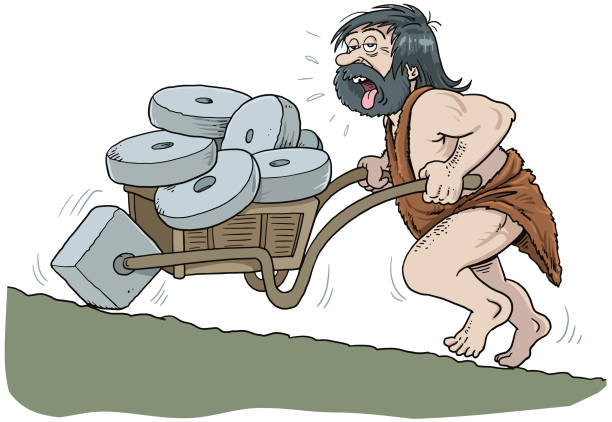Key Takeaways: The Wheel
The earliest wheels were made for potter’s use. They were created in Mesopotamia around 5,500 years ago.
The ancient Greeks invented the wheelbarrow, a simple cart with one the wheel.
Although wheels are mainly used for transport, they can also be used to spin thread and generate wind or hydroelectric power.
When was the Wheel Invented
Although the wheel is often considered one of the first inventions, it actually came after the inventions of agriculture, boats, and woven cloth. It was created around 3500 BCE. The very first wheels were made from wood during the transition between the Neolithic Age and the Bronze Age. They had a hole in their core to allow for the axle. This wheel is unique in that it is not inspired by nature, as opposed to other early human inventions like the pitchfork (which was inspired by forked sticks)
The inventor of the wheel
The invention of the wheel is different from the lightbulb or the telephone. It was a breakthrough invention that could be attributed to one (or more) inventors. Although there is archeological evidence that wheels were invented at least 5,500 years old, no one knows who exactly. Later, wheeled vehicles were developed in several areas of the Middle East and Eastern Europe. The Greeks are often credited with the invention of the wheelbarrow, a single-wheeled cart that transports goods and raw materials. But earlier evidence of wheeled cars has been found in Europe, China, and elsewhere.
Wheel and Axle
Without any additional innovation, the wheel would have been useless. It was actually the combination of wheel and axle that allowed for early transportation, such as carts and chariots. A piece of pottery from Poland called the Bronocice pot dates back to 3370 BCE and is thought to be the first depiction of a wheeled vehicle. Evidence suggests that small wagons and carts, probably drawn by cattle, were used in Central Europe at this point in human history.
The first carts had wheels and axles that could be turned together. The wooden pegs were used for fixing the sled to the rollers so it would not move when it was on them. The axle was placed between the pegs so that the wheels and axle could move freely. The pegs were later replaced by holes in the cart frame. The axle was then placed through these holes. The smaller wheels and the axle had to be separated. The wheels were attached to the axle from both ends.
The fixed axle, which was a non-turning axle that was connected to the cart frame, was finally invented. The wheels were attached to the axle so that they could freely turn. Stable carts with fixed axles could turn corners more easily. The wheel is now considered an invention.
The Sumerians created the sled after the invention of the wheel. It consisted of a flat base that was mounted on runners with curving ends. Although the sled was useful in transporting cargo on smooth terrain, the Sumerians soon realized that it would be more efficient if the device was mounted on rollers.
Modern uses of the wheel
Modern wheels have many advantages over old wooden wheels. Materials science innovations have enabled all types of tires to be made for cars, trucks, motorcycles, and bicycles–including those that can withstand rough terrain, snow, ice, and other obstacles.
The wheel is primarily used for transport, but it can also be used in other ways. To generate hydropower, watermills use water wheels, which are large structures with many blades running along the rim. Watermills were used to power textile mills and sawmills in the past. Similar structures, called turbines, are used today to generate wind power and hydroelectric energy.
Another example of the use of the wheel is in spinning wheels. This device was invented in India more than 2,500 years ago and used to spin natural fibers like cotton, flax, or wool. The spinning wheel was eventually replaced with the spinning jenny, which also includes wheels.
A gyroscope, a navigational instrument, consists of a spinning wheel as well as a pair of gimbals. This tool is used in accelerometers and compasses.

